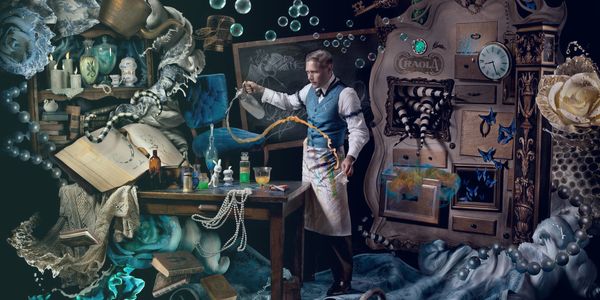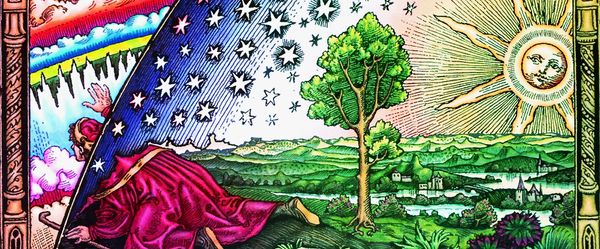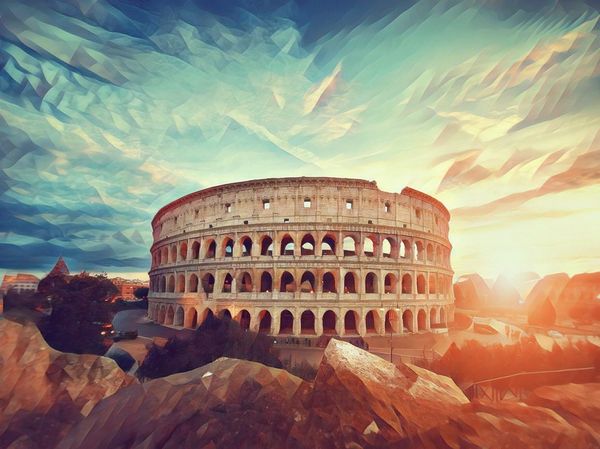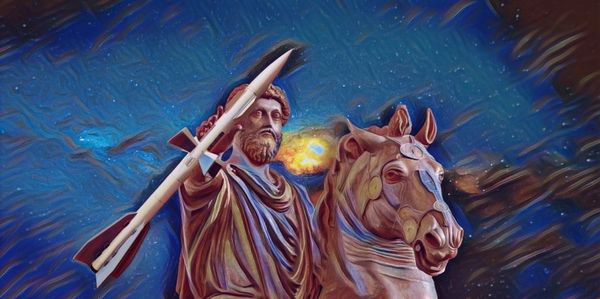Jordan Bates • • 9 min read
Friedrich Nietzsche’s Guide to Conquering Your Existence
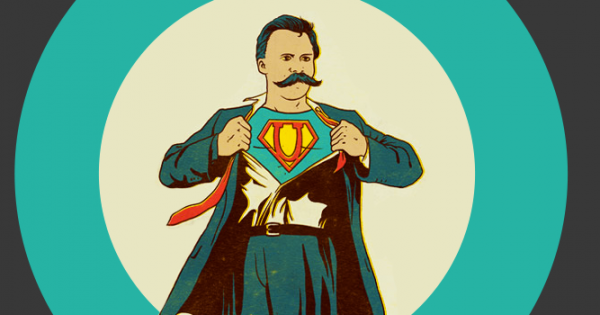
In Nietzsche’s most popular book, Thus Spoke Zarathustra, he described what would become one of his most memorable theories — that of the Übermensch.
In English versions of the work of Nietzsche, “Übermensch” is translated as “Superman” or “Overman”. The term “Superman” has adopted many connotations as a result of the comic book hero in popular culture, so for many scholars today, “Overman” is the more suitable term.
“Overman” refers to Nietzsche’s conception of a man who has literally overcome himself and human nature. In essence, an Overman is one who has superseded the bondage of the human condition and reached a liberated state — one of free play and creativity.
This state can be seen as the state of the pure individual, a person unencumbered by the influences and authorities of society and other people. This person wills their own destiny, creates their own values, and dances with the game of life to the tune of their own spirit.
In Thus Spoke Zarathustra, Nietzsche writes of three spiritual metamorphoses that must be undergone for the individual to reach the state of Overman. These transformations are rather prescriptive in nature, and thus can be seen as a sort of guide to becoming Overman, or liberating one’s spirit. Let’s take a closer look at them.
Metamorphosis #1: The Camel
The first metamorphosis described by Nietzsche is that of the camel. Of this, he writes:
“What is difficult? asks the spirit that would bear much, and kneels down like a camel wanting to be well loaded. What is most difficult, O heroes, asks the spirit that would bear much, that I may take it upon myself and exult in my strength?”
After this passage, Nietzsche goes on to list several items that may be considered among the most difficult or trying of life’s possible experiences. He indicates that the camel must invite these burdens. For example, he writes, “Or is it this: loving those who despise us and offering a hand to the ghost that would frighten us?”
What Nietzsche is saying is that before one can become Overman, one must first bear a great many burdens. One must battle with fear, love, truth, death, confusion, thirst for knowledge, and all of the other aspects of human existence. The camel embraces these challenges in the name of duty and nobility.
Put another way, the camel does not run from life or distract itself from it. It greets life head-on and embraces the difficulties that it presents out of a sense of duty. In doing so, the camel is humbled and strengthened. Only through suffering these challenges does the camel gain the strength and resilience necessary to attain the next spiritual metamorphosis.
Metamorphosis #2: The Lion
Nietzsche goes on to describe how the camel ultimately enters “the loneliest desert” before becoming a lion. The lonely desert metaphor can be interpreted as follows: The camel has sought out and invited the struggles that life has to offer. In doing so, it has become alienated to a certain extent. It has become different from others and from the society that produced it; it finds itself questioning everything, both its worth and the value of its pursuits.
The desert can be seen as a place of existential crisis, where the camel ponders whether or not any universal laws or virtues exist to guide it and give it purpose. For Nietzsche, such universal virtues and absolute purpose do not exist. The camel is forced to confront this possibility, and thus, the camel must become a lion. Nietzsche writes:
“Here the spirit becomes a lion who would conquer his freedom and be master in his own desert. Here he seeks out his last master: he wants to fight him and his last god; for ultimate victory he wants to fight with the great dragon. Who is the great dragon whom the spirit will no longer call lord and god? “Thou shalt” is the name of the great dragon. But the spirit of the lion says, “I will.” “Thou shalt” lies in his way, sparkling like gold, an animal covered with scaled; and on every scale shines a golden “thou shalt.” My brothers, why is there a need in the spirit for the lion? Why is not the beast of burden, which renounces and is reverent, enough? To create new values—that even the lion cannot do; but the creation of freedom for oneself for new creation—that is within the power of the lion. The creation of freedom for oneself and a sacred “No” even to duty—for that, my brothers, the lion is needed. To assume the right to new values—that is the most terrifying assumption for a reverent spirit that would bear much.”
Okay, that was a long quote, but it’s a key section of the text. Let’s unpack it a bit. When the camel discovers that universal truth and virtue may be non-existent, it has two choices: it can reject life as meaningless and probably commit suicide, or it can claim its own freedom and create its own meaning and virtue. To become Overman, the camel must obviously do the latter; it must ascend.
To do this, the camel must destroy the largest barrier to true freedom: the duty and virtue imposed by tradition and society. This is what Nietzsche’s great dragon represents. The camel had been a slave to the dragon, inviting life’s challenges but always living in accordance with the values imposed upon it from without. The dragon of “Thou Shalt” can also be seen as simply representing everyone who would try to tell one how to live one’s life.
The camel must reject this dragon of tradition and commands, but it cannot in its current, duty-loving form. Thus, it must become a lion. Its trials have allowed it to attain enough strength to become a lion. The lion symbolizes courage, tenacity, disillusionment, and even rage. Only in this state is the spirit able to deliver the “sacred “No.”” The “sacred “No”” represents the utter rejection of external control and all traditional values. Everything imposed by other individuals, society, churches, governments, families, and all forms of propaganda must be denied in an empowered roar.
That is not to say that the lion believes all virtues and values imposed by such entities to be evil or corrupt. Indeed, they could be useful and good. However, it is the fact that they come from an external authority that requires their rejection. An Overman is an absolute individual, and thus must create his own values on his own terms.
Metamorphosis #3: The Child
After the lion has delivered the “sacred “No””, the spirit still must make one more transformation to become Overman. The spirit must become a child. Nietzsche writes:
“But say, my brothers, what can the child do that even the lion could not do? Why must the preying lion still become a child? The child is innocence and forgetting, a new beginning, a game, a self-propelled wheel, a first movement, a sacred “Yes.” For the game of creation, my brothers, a sacred “Yes” is needed: the spirit now wills his own will, and he who had been lost to the world now conquers his own world.”
So, Nietzsche holds that the lion must again transform in order to forget. The spirit has undergone much duress and turmoil in its transformations, but it must cleanse its mind of the past. In delivering a “sacred “Yes””, the child affirms the moment, affirms uncertainty, and affirms the flux of life. The child becomes a self-propelled wheel, just as life can be viewed in the same terms. The child elects to roll with life, dance and play with it.
Ultimately, for Nietzsche, pure creation arises from this state of play. When one can achieve a child-mind — a mind immersed in the moment and filled with wonder and playfulness — then one can will his own will, create his own virtue, and thus create his own reality. In undergoing this final metamorphosis, the spirit overcomes itself, conquers its world, and reaches the state of Overman. The spirit achieves liberation.
Objections to Nietzsche’s Overman
There are certainly compelling objections to Nietzsche’s Overman theory and his nihilistic views about morality. If universally “good” values do not exist and one is free to create one’s own, what is there to keep one from determining that heinous acts—murder, rape, torture, etc.—are justified? Nietzsche was well-aware of this possibility and even predicted that his ideas would be used as justification for various atrocities. He was right: some speculate that his ideas were influential in Nazi ideology, and in 1924 two wealthy University of Chicago students who had been influenced by Nietzsche’s Overman theory murdered a 14-year-old boy.
The important thing to note here is that Nietzsche was, like most philosophers, a voracious truth-seeker. The objection in the preceding paragraph arises from a sort of utilitarian, consequentialist reading of Nietzsche (i.e. a reading from the perspective that we should act in such a way that our actions will result in the greatest good for the greatest number of people). But, for Nietzsche, this objection would have been yet another example of mankind attempting to impose arbitrary moral standards onto a universe in which none objectively exist. Nietzsche was less interested in the imaginary moral constructs mankind might use to reduce suffering and more interested in discovering the truth of existence.
While this might strike you as a reason to think Nietzsche was a scoundrel, I credit the man for not compromising his ideals simply because they were unpopular. Plus he went insane trying to save a horse from being beaten and spent the last decade of his life in a rather wretched condition, so maybe we ought to give him a break and acknowledge that he at least, did possess a fair share of compassion. He was an audacious, unflinching thinker, and that’s why he earned a permanent place in the logo of Refine The Mind. That’s not to say that I agree with all of his views; I agree with his doggedness. I don’t think the fact that the Overman could end up a hideous person requires us to dismiss the theory.
Furthermore, we have little reason to believe that the hypothetical Overman would not will compassionate values, and in fact, there is a certain argument for thinking it’s quite likely that he or she would. It’s possible to see Nietzsche’s “child”—a playful being in-touch with its deep-down nature—as uncannily similar to a realized Taoist or Zen Buddhist. There is a Zen saying—“Nothing is left to you at this moment but to have a good laugh.”—that is meant to refer to the moment after one has attained satori (or, “enlightenment”) that would seem equally appropriate if applied to the moment one has attained “child” status. In Zen and Taoism, as in Nietzsche’s work, when one has seen through all baggage imposed from without, one is able to affirm existence as a kind of game and to blossom colorfully with the great unfolding of things, organic as a daffodil, individuated but also one with the whole roadshow. In the Zen and Taoist traditions, when one reaches this state of liberation, one naturally discovers compassion for all sentient beings—not as a moral law, but as a natural outgrowth of the insight that all beings are “cut from the same cloth”, as it were. I like to think that the true Overman would share this realization, but Nietzsche doesn’t explicitly say so. If this is a distortion of Nietzsche, call it my Overman 2.0.
Usefulness of the Overman
Some have dismissed Nietzsche’s theory of the Overman as an unattainable idealization. Personally, I think doing so is near-sighted. From the theory of the Overman, we can at least glean several very important and useful axioms:
1) Pain is necessary for positive transformation and should be embraced.
I’ve actually written at length about this idea and how it necessitates a new conception of “happiness.” Basically, pain (emotional, physical, existential, etc.) is an inevitable aspect of life. Most of us allow it to become a source of anxiety or deeper sadness because we feel guilty about it — we wonder why we aren’t happy. Instead, we should realize that it is through our difficult experiences that we become resilient and more appreciative of life. Thus, we should instead accept altogether that pain cannot be avoided. We should embrace it and observe it calmly.
2) In order to liberate ourselves, we must wage war against control by external authority.
If our thoughts and actions are being dictated by entities outside of us, we cannot truly know ourselves. Thus, we cannot live authentically. I believe that the lives and ideas of others can still inspire and influence our lives and ideas. But, the key is to never be influenced blindly or to assume anything you “know” is absolute. We must develop the ability to entertain any idea without accepting it, allowing those parts of it that resonate as true to become infused into our unique and ever-changing worldview. We must make every idea our own, altering and understanding it in a way that is specific to our spirit.
3) We must cultivate great courage, strength, and audacity in order to truly sever our puppet strings.
There’s a reason most people walk blindly through life — it’s terrifying to pursue the alternative. Choosing to pursue truth and freedom at all costs is a painful and often lonely existence. The rewards, though, are galactic in their grandeur. The sense of freedom and power and oneness and love that one can attain in the pursuit of a higher existence are indescribable jewels of the human experience. But, as Nietzsche stresses, we truly must become lions to follow the path of spiritual growth. We must find in ourselves a place of unparalleled resolve and boldness to rise above those who wish to control our lives.
4) Our goal should be to affirm life and to dance with it: to play and create as children.
The child not only accepts life, but exalts it in full. The child-spirit recognizes that its own thoughts and expectations are the source of its experience, whether positive or negative. Thus, it chooses to live in a spontaneous, easy-going, and celebratory state. In doing so, it is able to “go with the flow”, per se, rather than swim against it. It is able to create purely because it lives authentically, tapping into the infinite imagination of the universe. We must aim to do so as well.
Original art by Mathiole

Jordan Bates
Jordan Bates is a lover of God, father, leadership coach, heart healer, writer, artist, and long-time co-creator of HighExistence. — www.jordanbates.life

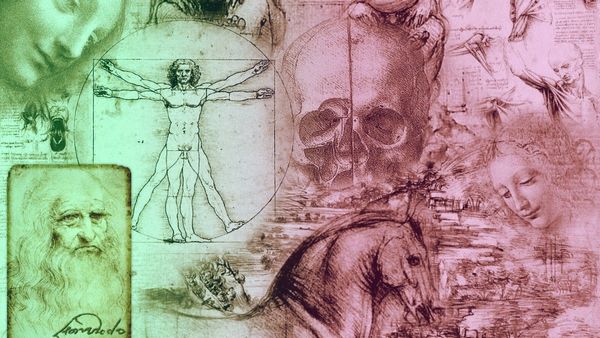
![Seneca’s Groundless Fears: 11 Stoic Principles for Overcoming Panic [Video]](/content/images/size/w600/wp-content/uploads/2020/04/seneca.png)

